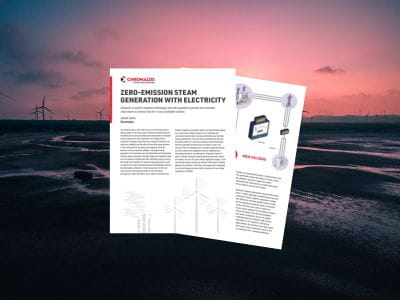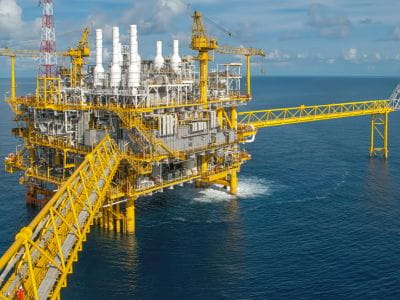For decades, traditional fossil fuels such as gas and oil have been used for heavy industrial heating around the world. Whether used in manufacturing for chemical reactions, sterilization, heat treatment or drying, industrial heating is common to many industries.
Now, as organizations commit to reduce their carbon emissions, many are turning to electrical heating to eliminate Scope 1 emissions and Scope 2 when combined with renewable energy sources. This switch has significant potential to reduce the effects of climate change, given around a third of global CO² emissions come from industrial processes, including heating.
Traditionally, low voltage sources were the only option for industry heating. Now, with advancements in technology, medium voltage is available for those requiring higher thermal loads traditionally satisfied with fossil-based fuels.
What is the difference between low, medium and high voltage?
Low, medium and high voltage are terms used to describe the different levels of electrical voltage or potential difference.
Low Voltage (LV): This refers to voltage levels below 1,000 volts (1 kilovolt or kV). Whilst it can differ depending on the country, most low voltage systems commonly operate at voltages between 120 – 690V and is common in residential, commercial, and light industrial applications.
Medium Voltage (MV): Medium voltage range from 1kV to 100kV and used for electrical distribution networks, such as power distribution to residential neighborhoods, commercial buildings, and industrial facilities.
High Voltage (HV): This is where voltage levels are above 100kV and below 230kV allowing long-distance transmission of electrical power from power plants to distribution substations.
Why medium voltage is the way forward for industrial thermal solutions
Whilst low voltage applications have been the traditional method for small scale applications, medium voltage can be used for larger heavy-industry processes. The benefits of medium voltage are:
Low Cost of Ownership
Medium voltage electric systems reduce installation and life cycle costs due to the ability to operate directly from an existing distribution system. This eliminates the need for dedicated step-down transformers and complex wire runs.
Improved Efficiency
Operating at medium voltages increases the efficiency of power distribution and consumption. A low-voltage system will operate at about 96% efficiency compared to medium voltage which maximizes efficiency to nearly 100%.
Zero Emissions
Electric heating has zero onsite emissions compared to fossil fuel system eliminating scope 1 emissions. When that electricity is generated from a renewable source, it provides a completely emissions-free solution, reducing scope 2 emissions.
Ease of Maintenance
Electrical elements have no moving parts, less infrastructure, and are easily replaceable which allows for quicker maintenance cycles. This in turn minimizes downtime when compared to more complex fossil fuel systems.
Medium voltage heating systems are now the preferred way to provide heavy-industry with zero emission heat. Chromalox’s DirectConnect™ is the leading medium voltage solution available today, supporting businesses globally in their drive towards decarbonization.




